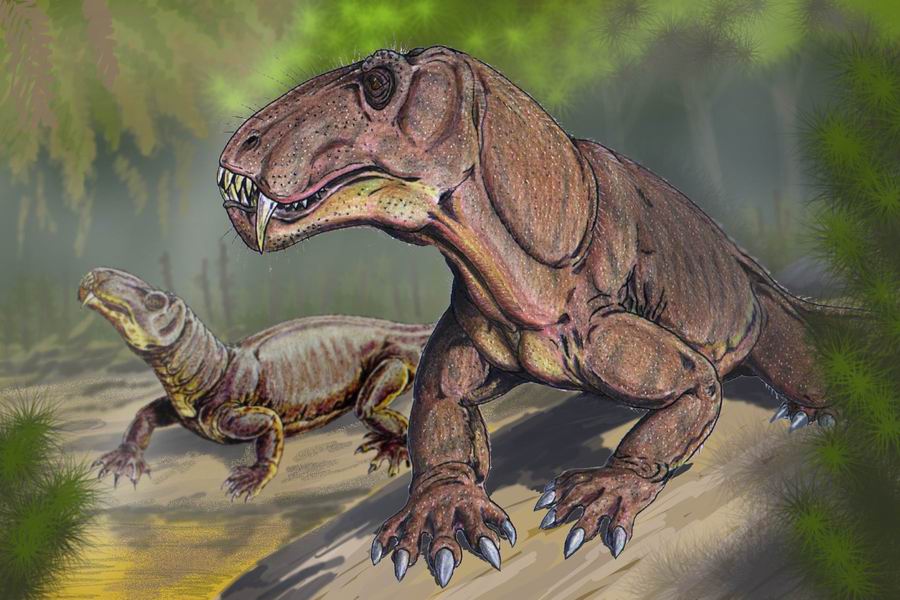 |
 |
 |
 |
 |
Produced
by the Population Genetics and Evolution class, Furman University |
||||
 |
 |
 |
 |
 |
Produced
by the Population Genetics and Evolution class, Furman University |
||||
 |
Titanophoneus
and the Dinocephalians |
 |
||
| Titanophoneus
potens belongs to the group known as dinocephalians, terrestrial
therapsids that closely resemble large reptiles. Fossil records indicate
that they were very large in size, sometimes reaching lengths of six meters
from head to tail (Kazlev 1999). Like most other dinocephalians, their
great size gave them a competitive advantage. Scientists believe that
these creatures were omnivores due to the type and placement of various
teeth found in the recovered skull fossils (Bristol 2010); but they were
certainly impressive predators, too. All dinocephalians, including Titanophoneus,
had an enormous amount of jaw strength because of the muscle attachment
on their skull. Since all of them are therapsids, they had the single
large temporal openings in their skulls that characterize the synapsida.
This opening allowed for a larger muscles to attach to their jaw, therefore
creating are stronger biting force (Pruitt and Karhu 2010). This evolutionary
trait would have benefited them when hunting and eating other organisms.
Extinct therapsids like these dinocephalians are important evolutionarily
because they represent one of the early synapsid radiations - a radiation
that included the ancestors of true mammals. Page by Pete Calomiris |
 |
| Titanophoneus. Picture from: Wikimedia.com | |
| Kazlev, MA. 1998. Dinocephalia. Kepher.net. Accessed March 2010. Pruitt C, and Karhu A. 2010. Titanophoneus potens. Paleontological Institute of Russian Academy of Sciences. Accessed March 2010. University of Bristol. 2010. Dinocephelia. Accessed March 2010. |